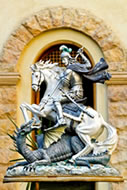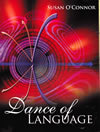The Hero’s Journey
 Because the hero’s journey is the story of all mankind, from the physical adventures that change our lives to the journey
inward
toward the hidden recesses of our fears and anxieties, our darkest shadows, this archetypal motif is often the foundation of
many of the stories
we read every day. Joseph Campbell was among the first cultural anthropologists and mythologists
who identified the stages of the hero’s journey. Having been called to an adventure the hero crosses
the threshold into the dark kingdom of tests and trials.
After being subjected to the supreme ordeal—symbolic death and rebirth, often in a cave like structure—the hero flees and
crosses the threshold to return home with the treasure, the elixir that will improve the lives of others.
The hero is no longer the same person, having undergone a symbolic path to rebirth.
Because the hero’s journey is the story of all mankind, from the physical adventures that change our lives to the journey
inward
toward the hidden recesses of our fears and anxieties, our darkest shadows, this archetypal motif is often the foundation of
many of the stories
we read every day. Joseph Campbell was among the first cultural anthropologists and mythologists
who identified the stages of the hero’s journey. Having been called to an adventure the hero crosses
the threshold into the dark kingdom of tests and trials.
After being subjected to the supreme ordeal—symbolic death and rebirth, often in a cave like structure—the hero flees and
crosses the threshold to return home with the treasure, the elixir that will improve the lives of others.
The hero is no longer the same person, having undergone a symbolic path to rebirth.
 The application of this motif to literature and life in the classroom offers an opportunity for interesting and thought provoking discussion
and writing. Students get a glimpse into the lives of the characters with the depth provided by the symbolism: the sacred marriage,
father atonement, the life-death-rebirth archetype, the inmost cave or belly of the whale.
This imagery teaches students to use skills of application, synthesis, and evaluation, all of which encourage higher level thinking.
The application of this motif to literature and life in the classroom offers an opportunity for interesting and thought provoking discussion
and writing. Students get a glimpse into the lives of the characters with the depth provided by the symbolism: the sacred marriage,
father atonement, the life-death-rebirth archetype, the inmost cave or belly of the whale.
This imagery teaches students to use skills of application, synthesis, and evaluation, all of which encourage higher level thinking.
